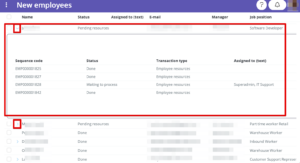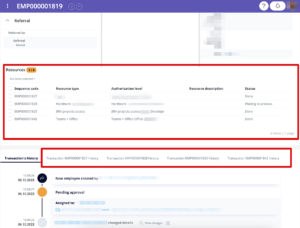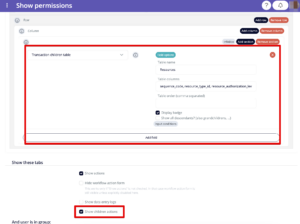In some processes, it may be useful to create relations between transactions – when one transaction has to be superior to the others. Flowis allows you to create such a structure – we call the main transaction the “Master Transaction” and her subordinates are the “Children Transactions”.
Use cases for Children Transactions:
- HR processes (onboarding of new employees as the Master Transaction and assigning of needed resources as its Children Transactions)
- Economic processes (invoice as the Master Transaction and the payments as Children Transactions)
- Supplier-related processes (the supplier as the Master Transaction and the contracts with him as the Children Transactions)
- and much more.
Creating children transactions
There are more possible ways to create relations between transactions:
- Duplicate permissions – if you have Duplicate Permissions set up, you can duplicate a transaction already created in Flowis. The newly created transaction will automatically be a child of the originally duplicated transaction.
- Manually in a drop-down –
- Create transactions from iterable callback in Workflows – if any of your transactions contains a table, each row of the table can be made into a Child Transaction using the “Create transactions from iterable” callback used in Workflows. Learn more about its use in our separate article about Callbacks in Workflows.
- Interface configurations – you can write code in Interface Configurations that will create Children Transactions with whichever specification you need. Since this option requires programming knowledge, we recommend contacting your IT administrator to set this up for you.
Flowis options regarding children transactions
Flowis allows you to easily see the created structure. When you are in the list of transactions, each Master Transaction has an arrow next to it. After clicking on it, you will see all its Children. If any of the Children has more Children Transactions under itself, you will see a clickable arrow here too.

You can set up a custom Table Layout for every level of the transactions. See more about how to set it up in our article about Table Layouts.
When you open a Master Transaction, you can see the list of Children Transactions with any columns you wish – you just need to set this up in Show Permissions of the Master Transaction by adding the “Transaction children table” component.
You can also see the transaction timeline of the Children. This needs to be set up in the Show Permissions of the Master Transaction too – make sure to check the “Show children actions” checkbox.

